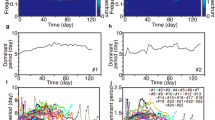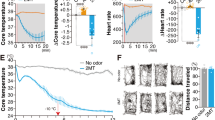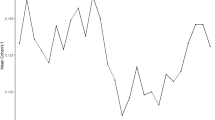Abstract
METABOLIC activity is profoundly altered in the hibernating animal, as compared with that in the normal. Evidence is also available that under hibernating conditions nervous function in certain species can be affected1. Consequently it was of considerable interest to determine the toxicity of a ganglionic blocking agent to animals under the abnormal metabolic conditions produced by hibernation. The toxicity of the cholinesterase inhibitor O, O-diethyl-S-2- diethylaminoethyl phosphonothiolate2 has been determined in the nornal and hibernating hamster by the intraperitoneal route.
This is a preview of subscription content, access via your institution
Access options
Subscribe to this journal
Receive 51 print issues and online access
$199.00 per year
only $3.90 per issue
Buy this article
- Purchase on SpringerLink
- Instant access to full article PDF
Prices may be subject to local taxes which are calculated during checkout
Similar content being viewed by others
References
Kayser, C., Année Biologique, 29, 109 (1953).
Ghosh, R., and Newman, J. F., Chem. and Indust., 118 (1955).
Author information
Authors and Affiliations
Rights and permissions
About this article
Cite this article
SCAIFE, J., CAMPBELL, D. Toxicity of a Cholinesterase Inhibitor to the Hibernating Hamster. Nature 182, 1739 (1958). https://doi.org/10.1038/1821739a0
Issue date:
DOI: https://doi.org/10.1038/1821739a0



